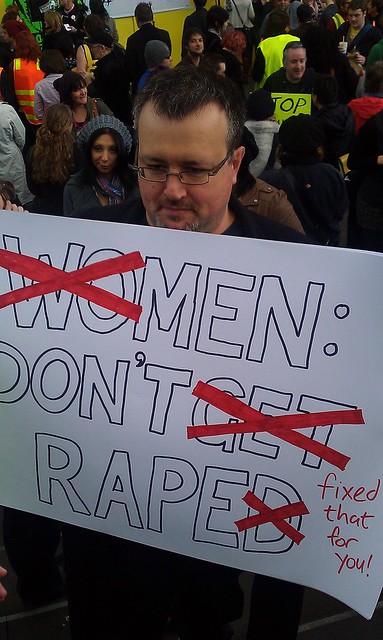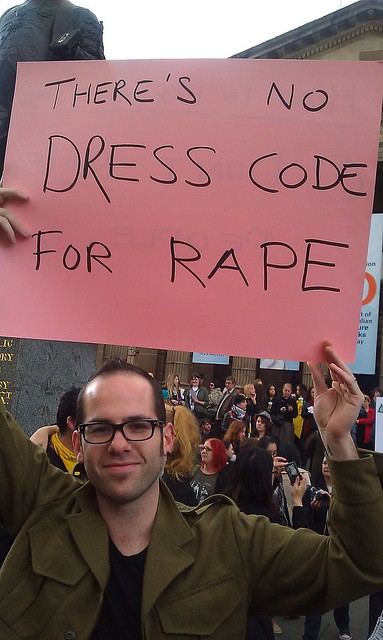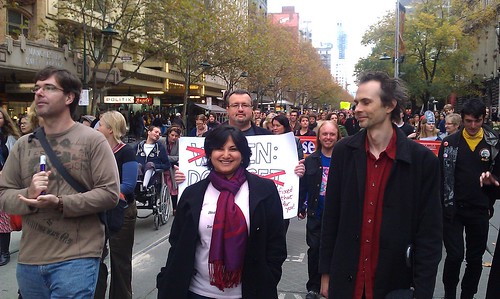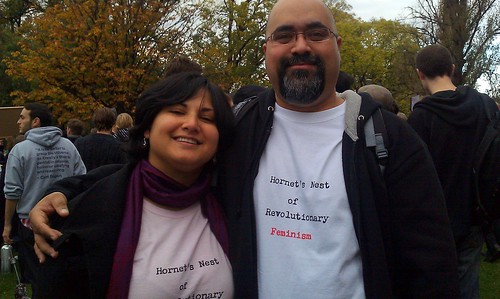So today we took part in SlutWalk Melbourne (which I wrote about earlier).
The only half decent report on the Melbourne walk is here but I’m sure there will be others over the next few days. The really good accounts (i.e. the nuanced and non-snarky ones) will, inevitably, be published in blogs.
We started outside the State Library of Victoria on Swanston Street with a few speeches:

The one by Cody Smith was particularly inspirational though others made really good points as well, such as:
"It shouldn't be the responsibility of survivors to educate people about rape."
"It is not the responsibility of women to educate people on sexism"
"If you come from a position of privilege it should be your responsibility to educate yourself and your friends."
Lots of people were carrying awesome protest signs, like this one from James:

And this one from someone standing behind us:

After the speeches we walked down Swanston and Collins Streets to Parliament Gardens. Here are Scott, Nadia, James, and Andrew:

And here are me and Nadia once we got to the gardens:

If you’re curious about the “Hornet’s nest of revolutionary feminism” t-shirt I’m wearing, you can find out more about that on the Tiger Beatdown blog.
(Also, you can see a few more photos from this walk on my Flickr profile.)
Sadly, while the walk made an important statement, raised a lot of awareness, and was lots of fun to participate in, my cold didn’t react very well to two hour out in the cold so I got home a little worse for wear. I’ll definitely be sleeping in tomorrow!
A big thanks to the walk’s organizers and volunteers for making this happen; Samurai AV for the sound system; Victoria Police for coordinating our movement through the CBD; and everyone who turned up today (both in person and in spirit).
Here’s hoping this walk – and, indeed, this whole movement – has a genuine, long-term impact that reduces incidents of victim blaming and slut shaming. If nothing else, the walk has got us all talking about theses issues and that, in itself, is a good thing.







